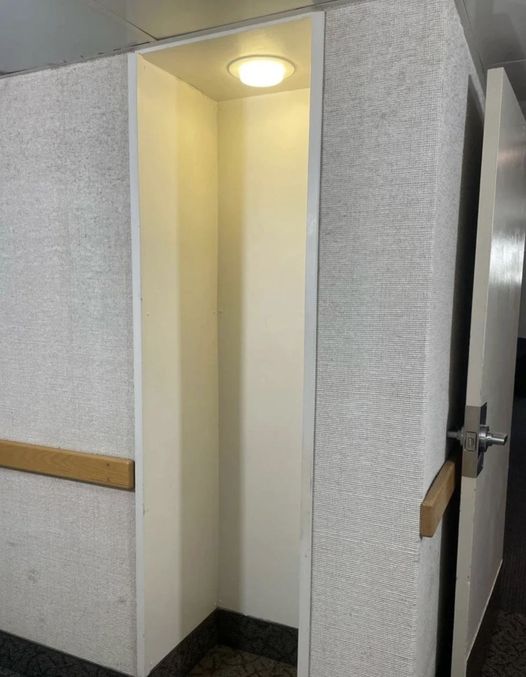Imagine a world where staying in touch with loved ones wasn’t just a tap away on a smartphone. Long before the digital era took over, college students in the 1960s, ‘70s, and ‘80s relied on a far simpler but equally powerful tool—the phone booth. For many, these weren’t just communication devices; they were a cherished part of student life, providing a much-needed escape from the hustle and bustle of dormitory living. Let’s take a look back at why these mysterious spaces were essential to student life back then.

The Hidden Social Corners of Campus Life
Walk through an older college campus today, and you might spot small, forgotten spaces tucked away in corners of buildings. These nooks, sometimes with a dusty light fixture or an empty shelf, once housed phone booths. Back in the day, these weren’t just relics but vital social hubs where students lined up to make calls home. In the era before cell phones, these booths served as the only lifeline to the outside world for students who missed their families.
Phone Booths: A Lifeline for Students Far from Home
In the decades before the internet, these phone booths were essential, especially in crowded dormitories where privacy was rare. Many students came from distant states, and the booths became their only way to stay connected to family and friends. Located conveniently within dorm buildings, these booths became essential bridges to the people they loved. For students feeling homesick, they provided a much-needed connection to the familiar voices they longed for.
Life in the dorms was often noisy, with roommates chatting, music blaring, and constant foot traffic in the hallways. For those needing a break, stepping into a phone booth provided a few moments of solitude. The small, enclosed space allowed them to lean against the wall, take a deep breath, and make their calls in peace. It wasn’t just about having a conversation—it was about creating a moment of escape in a hectic environment.
A Simple Design with a Significant Impact
These phone booths were modestly designed—a small enclosed space with a phone, sometimes just a stool, and a light overhead. Many didn’t even have full doors, yet the semi-enclosed space was enough for students to feel a sense of privacy. The overhead light wasn’t just practical; it added a warm, comforting glow that made the booth feel almost like a sanctuary. For a few precious minutes, students could forget about the pressures of college life and reconnect with loved ones far away.
As the 1990s rolled around, cell phones began to change everything. Suddenly, the need to wait in line at a shared booth disappeared. Students no longer had to collect spare change to make a call or schedule time to check in with their families. The once-ubiquitous phone booths started disappearing, replaced by the convenience of mobile phones that fit right in your pocket.
More Than Just a Way to Make a Call
For those who remember, using a phone booth was about much more than just making a call—it was about intention and effort. Unlike today, where communication is instant, making a call back then took time and planning. Students had to gather coins, wait their turn, and savor every second of hearing a familiar voice. The effort made each conversation more meaningful, fostering connections that today’s quick texts and voice notes often lack.
Though these booths have mostly disappeared, some remnants still linger on older campuses. These relics serve as reminders of a time when hearing a loved one’s voice after weeks of separation was a cherished experience. The clinking of coins, the gentle hum of background conversations, and the joy of finally reaching someone special made each call unforgettable.
A Nostalgic Glimpse into Simpler Times
In today’s world of instant communication, it’s easy to forget the charm of those old phone booths. Passing by one of these forgotten campus corners, you might almost hear the distant ringing of a payphone, feel the cool metal of the receiver, and sense the anticipation of waiting for someone to pick up. Yes, communication was slower, but it was also more deliberate and personal.
Back then, these phone booths were a lifeline for students feeling overwhelmed by academic pressures. Whether they had doors or not, the booths provided a small bubble of privacy in a world that could feel very crowded. They were more than just a means to make calls—they were sanctuaries where students could escape, if only for a little while.
Preserving a Piece of History
Today, it’s tempting to see these old phone booths as outdated relics. But in reality, they symbolize how much communication has evolved. In those days, making a phone call was an event—it required patience, coins, and often a bit of waiting. The next time you pass one of these quirky corners on campus, pause for a moment and think of the students who once stood there, waiting anxiously to hear a loved one’s voice.
These booths remind us of a slower, more thoughtful era—a time when even a brief phone call felt like a treasured gift. Though we live in a world of instant everything, there’s still something special about those hidden, forgotten corners where students once connected with the world beyond their college walls. Even today, they hold a special place in the memories of those who used them, proving that sometimes, the simplest things leave the most lasting impressions.





